Basketball is a fast, exciting, and entertaining sport played between two teams, each consisting of five players. A team wins games by scoring more points than the opposing team. Players score by shooting a large inflated ball into a raised goal, called a basket, at one end of a basketball court. A player can advance the ball toward the basket only by dribbling (bouncing the ball) or by passing to a teammate. Each team also tries to prevent the other team from scoring.
Basketball was invented in the United States in 1891. By the mid-1900’s, it had become the world’s most popular indoor sport. Today, millions of fans crowd into gymnasiums and arenas to watch their favorite teams. Millions more watch games on television. In the United States, thousands of elementary schools, high schools, and colleges and universities sponsor amateur teams for male and female players. The finest male players in the world compete as professionals in the National Basketball Association (NBA). 
Basketball is a popular form of recreation as well as an organized team sport. Park districts, religious organizations, and youth centers sponsor recreational leagues. Most schools sponsor intramural competition and participate in district and regional leagues and tournaments. Both young people and adults enjoy playing on neighborhood playgrounds, in backyards, in alleys, and on driveways. As few as two players can play; all they need is a ball, a basket, and a level surface to serve as the court.
Basketball requires teamwork, quick reactions, and endurance. Tall players have an advantage because they can reach closer to the basket or above other players to shoot and rebound. But smaller players also make contributions to their teams as shooters and ball handlers. The three-point field goal, which first was used regularly in the NBA in 1979 and in subsequent years in college and international play, has substantially increased the contributions of smaller players.
This article deals chiefly with basketball as played in the United States. The game differs somewhat in other countries. The section International competition describes some of the differences.
How to play basketball
The court.

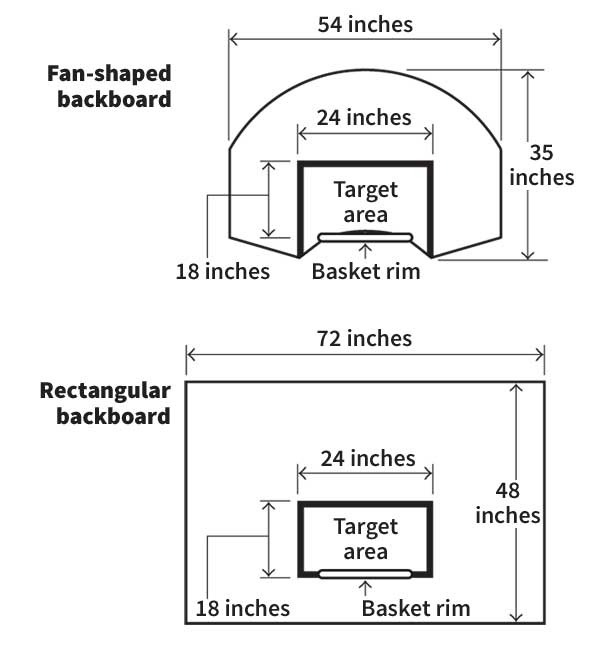
Equipment.
Basketball is played with a round brown or orange inflated ball made of leather or synthetic material. The ball for boys’ and men’s games weighs between 20 and 22 ounces (567 to 624 grams) and is about 30 inches (75 centimeters) in circumference. Girls and women use a ball that weighs between 18 and 20 ounces (510 to 567 grams) and is about 29 inches (74 centimeters) in circumference.
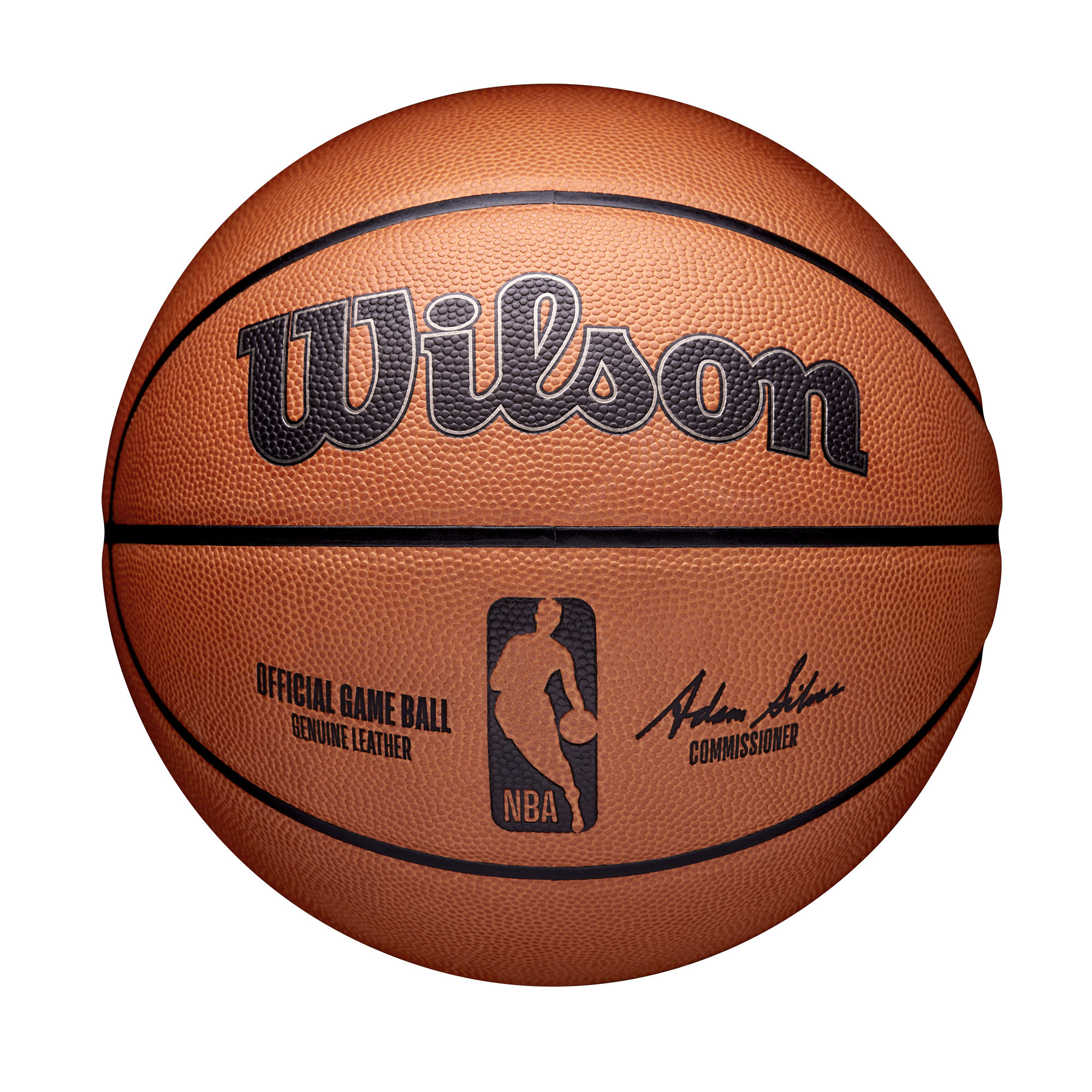
The standard basketball uniform consists of a sleeveless shirt, shorts, socks, and lightweight canvas or leather shoes with rubber soles. The shirt and shorts are lightweight cotton or polyester. Each jersey has a number on the front and back so the player can be easily identified by the officials and spectators. Many college and all professional players have their last name on the back of the jersey with the name of the team on the front. The home team chooses the color of the uniform it will wear for a particular game, and the visiting team wears a contrasting color.
The players.
The five players on a team play both offense and defense. When their team has the ball, they are on offense; when their opponents have the ball, they are on defense. Because possession of the ball can change rapidly, all players must be alert so that they can quickly switch between offense and defense.
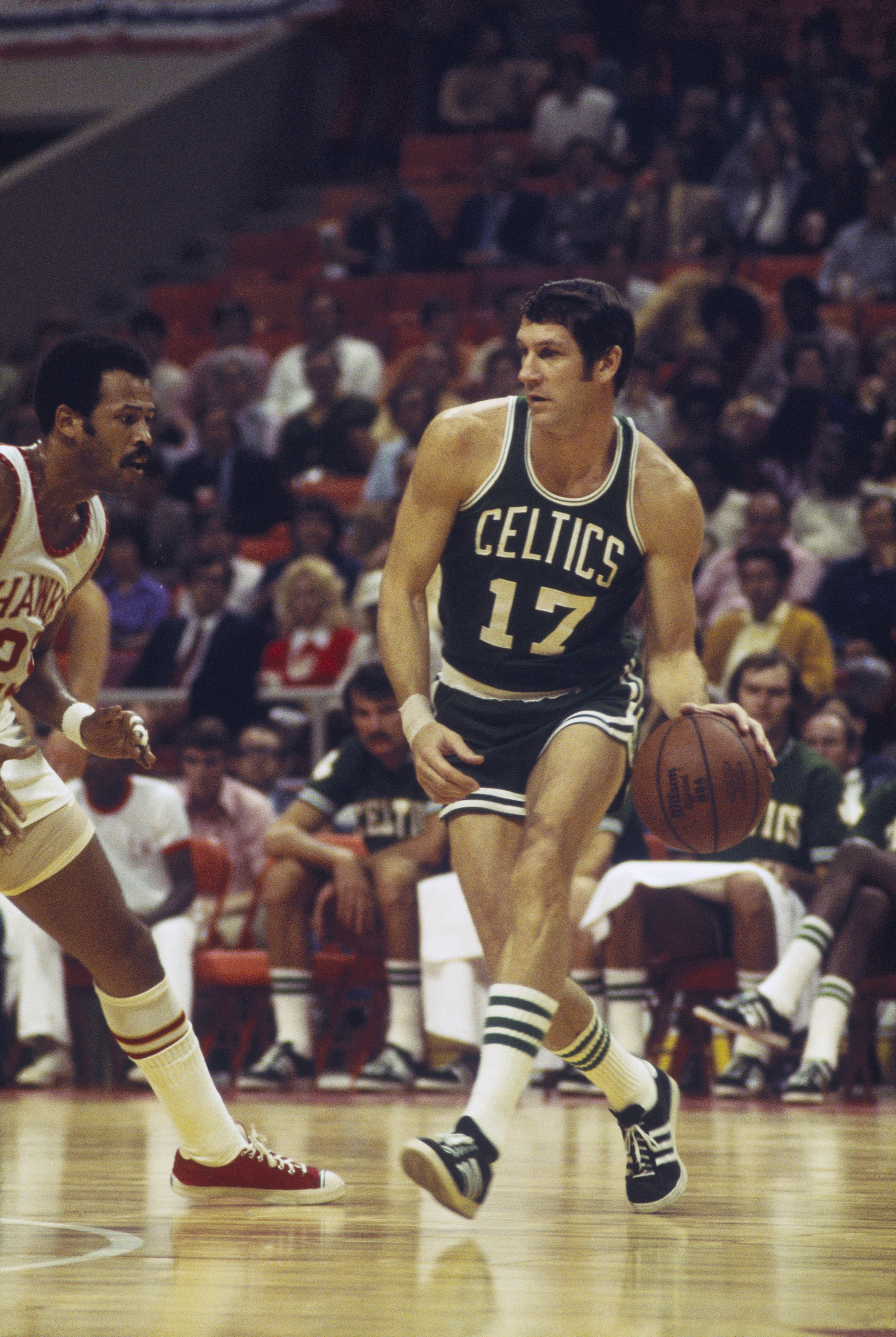
Normally, a team consists of two guards, two forwards, and a center. However, players can move anywhere on the court at any time, no matter what their position. A team can also vary the positions at any time, for example, playing three guards and two forwards. This section describes the role of each position on offense.
The guards are usually the smallest and quickest players. They normally play farther from the basket than the forwards or center. Guards should be good dribblers and passers. They direct the offense and start most of the plays. Some teams have a point guard, who has the major ball-handling responsibilities. The other guard is the shooting guard and is often the team’s best shooter.
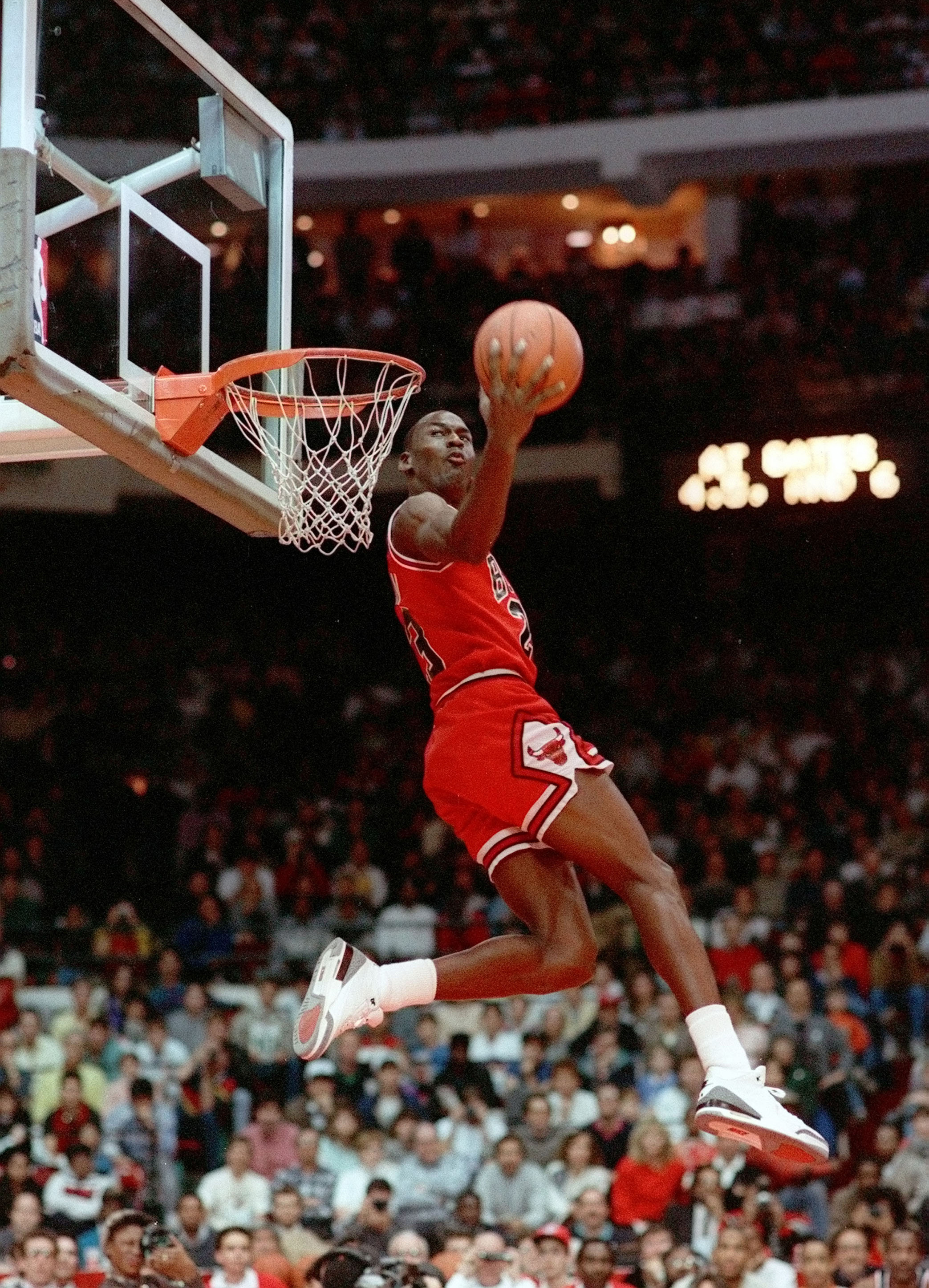
Forwards are generally taller and stronger than guards. Forwards usually play in the area from the base line to the free throw lane. They should be good rebounders and be able to maneuver for shots close to the basket. The center is usually the team’s tallest player and best rebounder. A center who is a good rebounder and scorer can dominate a game. With the expanded use of the three-point shot combined with rules changes to limit the impact of play closer to the basket, guards and forwards have become the most dominant players in basketball.
The coach
is a basketball team’s teacher. Most college and professional teams have one or more assistant coaches who help the coach work with the team. Together, they make up the coaching staff.

The coach organizes practice sessions to prepare the team for each game. He or she selects the players who will start the game. During the game, the coach substitutes players, trying to use those players who perform best in certain situations. The coach decides when the team needs a time out, and determines what type of offense and defense will be most effective.
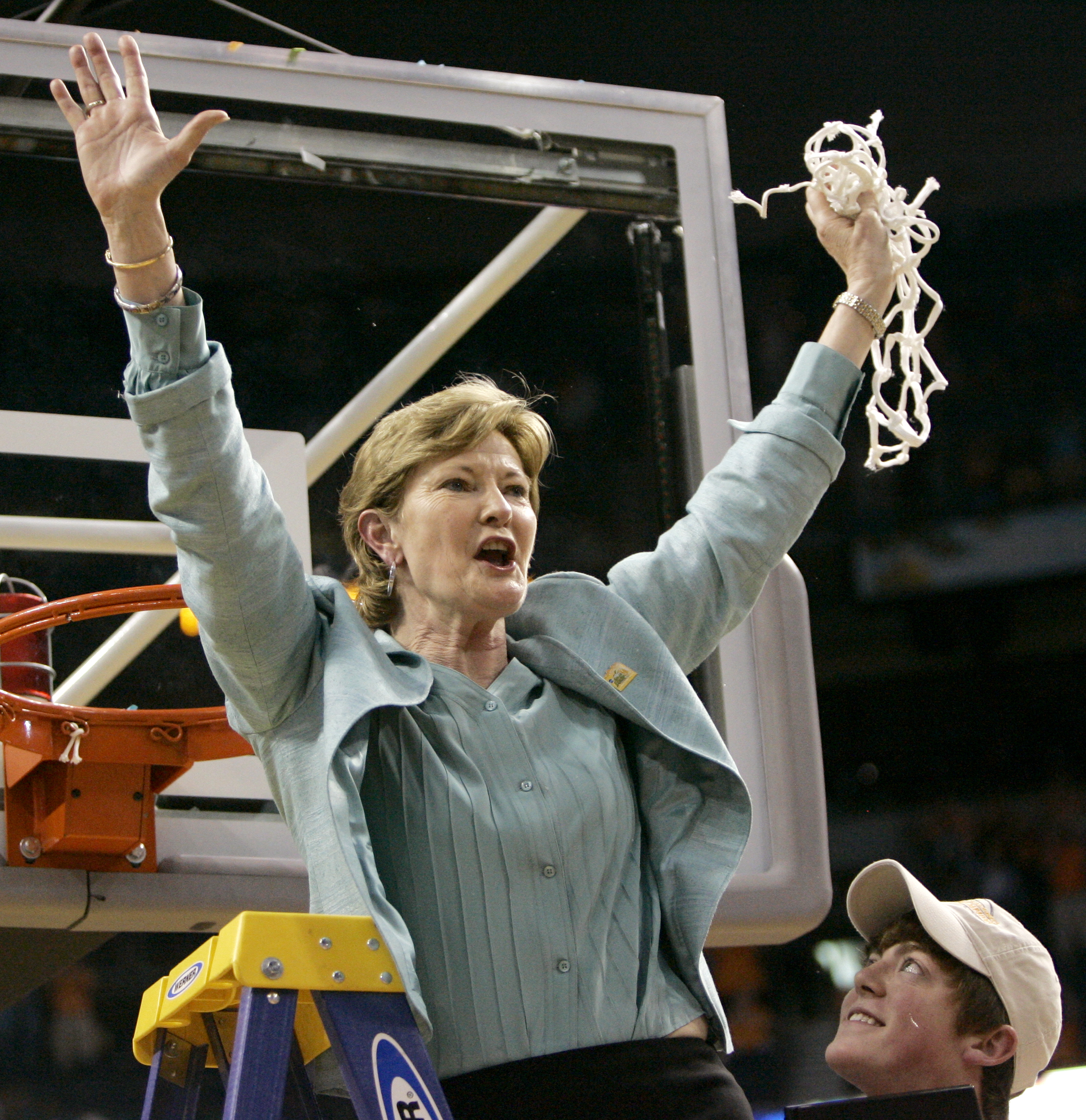
A coach must analyze the opposing team, determining its strengths and weaknesses. Often an assistant coach will scout (watch) a game involving an upcoming opponent and report back to the coach on the best strategy for playing the team. College and especially professional teams have scouting staffs that travel throughout the country analyzing opponents.
The officials
consist of a crew chief, a referee, and an umpire. They work on the court. Sitting at the scoring table along the sidelines are scorekeepers, people who keep game statistics, and time clock operators. The crew chief is in charge of the game. The referee and umpire work with the crew chief to ensure that the game is played by the rules. They each can call any foul or violation they see anywhere on the court.



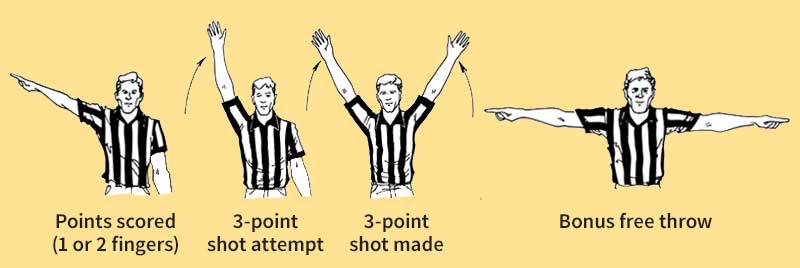
In the NBA, one official, called the lead, is positioned at the baseline under the basket on the side with the ball. The trail official works above the three-point line on the same side. The slot official operates at the free-throw line extended on the side without the ball. The three officials try to form a triangle to obtain the best sight lines. The officials reverse positions when the teams move to the other end of the court. To call a violation or foul, in any game, the official blows a whistle to stop play and the clock. The official explains the violation or foul, usually with a hand or arm signal, and enforces the penalty. The game then resumes.
The scorekeepers and timekeepers sit at a table behind one of the sidelines. One scorekeeper operates the electronic scoreboard. The other scorekeeper keeps the official scorebook, recording all the field goals, free throws, fouls, and time outs. One timekeeper operates the electric game clock. A second one operates the shot clock if the rules call for each team to shoot within a given time limit.
Players entering the game must first report to the scorekeeper in charge of the scorebook. The timekeeper must stop the clock every time the referee or umpire blows the whistle. One of the officials will signal the timekeeper when to restart the clock.
Playing time.
High school games last 32 minutes. They are divided into two 16-minute halves, each consisting of two 8-minute quarters. The teams take a 1-minute break at the end of the first and third quarters and a 10-minute break between halves. Men’s college teams play two 20-minute halves, with a 15-minute break between halves. Women’s college teams play four 10-minute quarters, with a 15-minute break after the second quarter. In international competition, the four quarters each run 10 minutes.
NBA teams play 12-minute quarters. They take a 2 1/2-minute break between quarters and a 15-minute break between halves. There is a 2 1/2-minute break between the end of regulation and overtime if the score is tied after regulation time expires. A game clock located above the court shows the time remaining in a half or quarter.
In men’s and women’s college games, the offensive team must shoot within 30 seconds or lose possession of the ball to the opponents. In men’s and women’s professional games, the offensive team must shoot within 24 seconds.
If the score is tied at the end of regulation time, teams play as many overtime periods as needed to determine a winner. High school teams play 4-minute overtimes. College and NBA teams play 5-minute overtimes.
Play is stopped if an official calls a foul or violation, if the ball goes out of bounds, and if a team calls a time out. The game may also be stopped if a player is injured or if the officials determine that spectators are interfering with the normal progress of the game.
High school teams are permitted four time outs during a game. College teams may call four time outs, plus one additional time out for each overtime period. If a college game is televised, each team is permitted only three time outs during regulation play. In addition, at least three time outs may be called for TV commercials. The NBA permits seven 75-second time outs during a game and no more than four in the fourth quarter. No more than two may be called in the final three minutes.
Scoring.
A team scores points by making field goals and free throws. A field goal may be attempted from anywhere on the floor by any offensive player while the game clock is running. Field goals are worth 2 points if they are taken inside a three-point line. Field goals made from behind this line count 3 points.
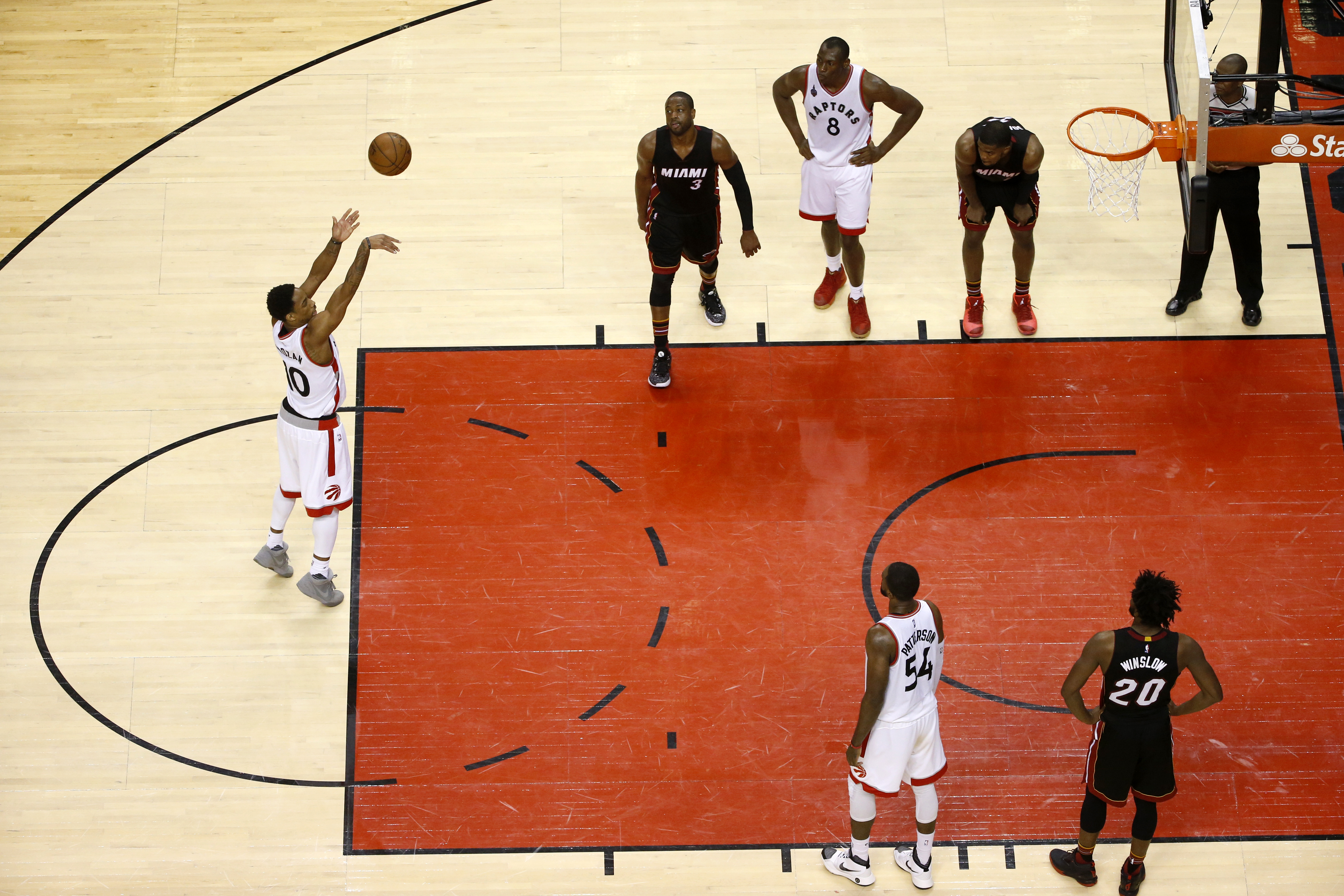
Free throws count 1 point each and are taken as a penalty after certain fouls. A player attempts a free throw from behind the free-throw line and inside the free-throw circle. Players have 10 seconds to shoot after the official hands them the ball.
Playing the game.
A game starts with the center jump. Four players from each team stand outside the restraining circle. The fifth player, usually the center, stands inside the center circle. The official tosses the ball into the air above the two players, who jump up and try to tap it to a teammate. The game clock starts as soon as a player touches the ball. In the NBA, the team that loses the opening center jump gets the ball to start the second half.
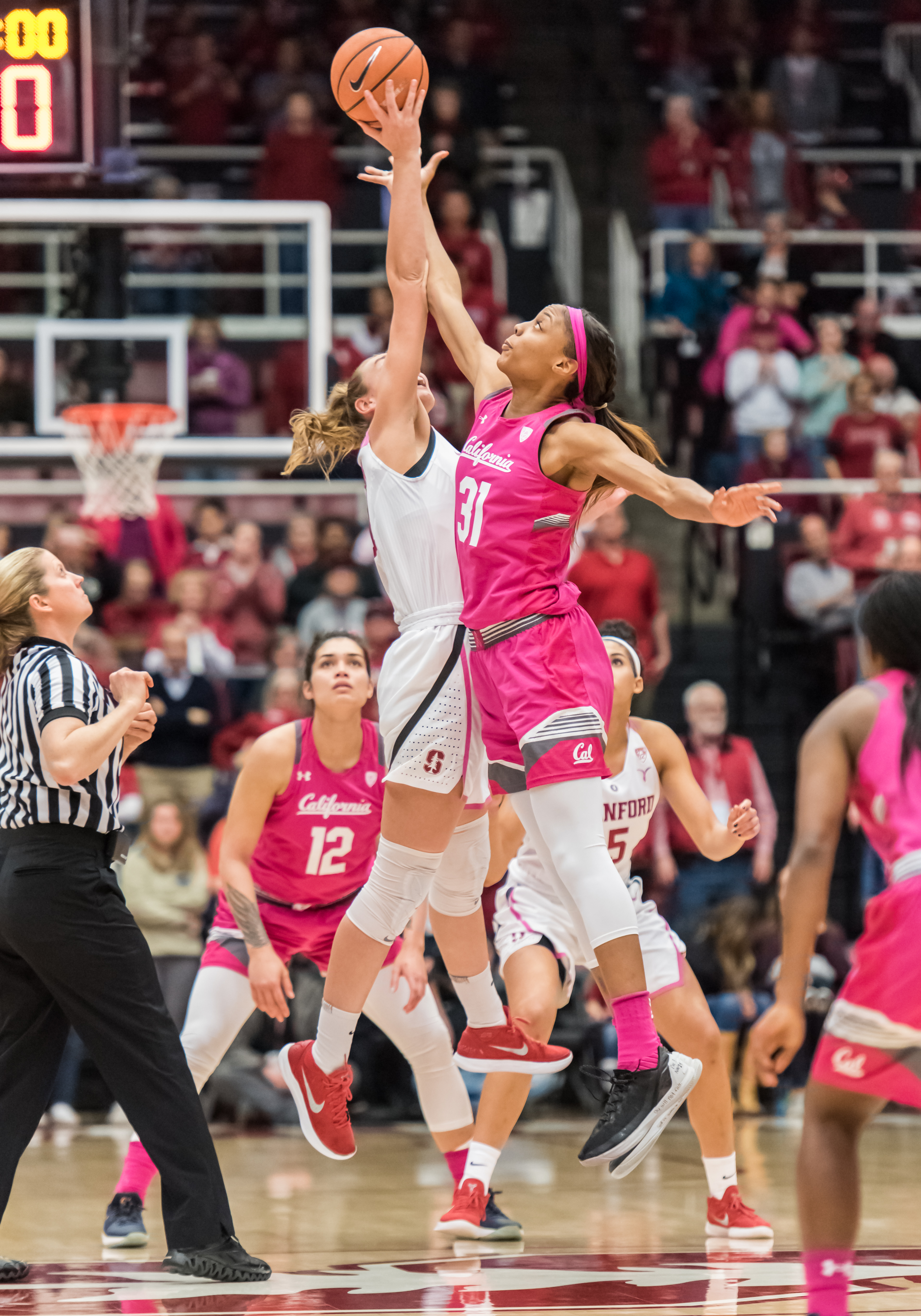
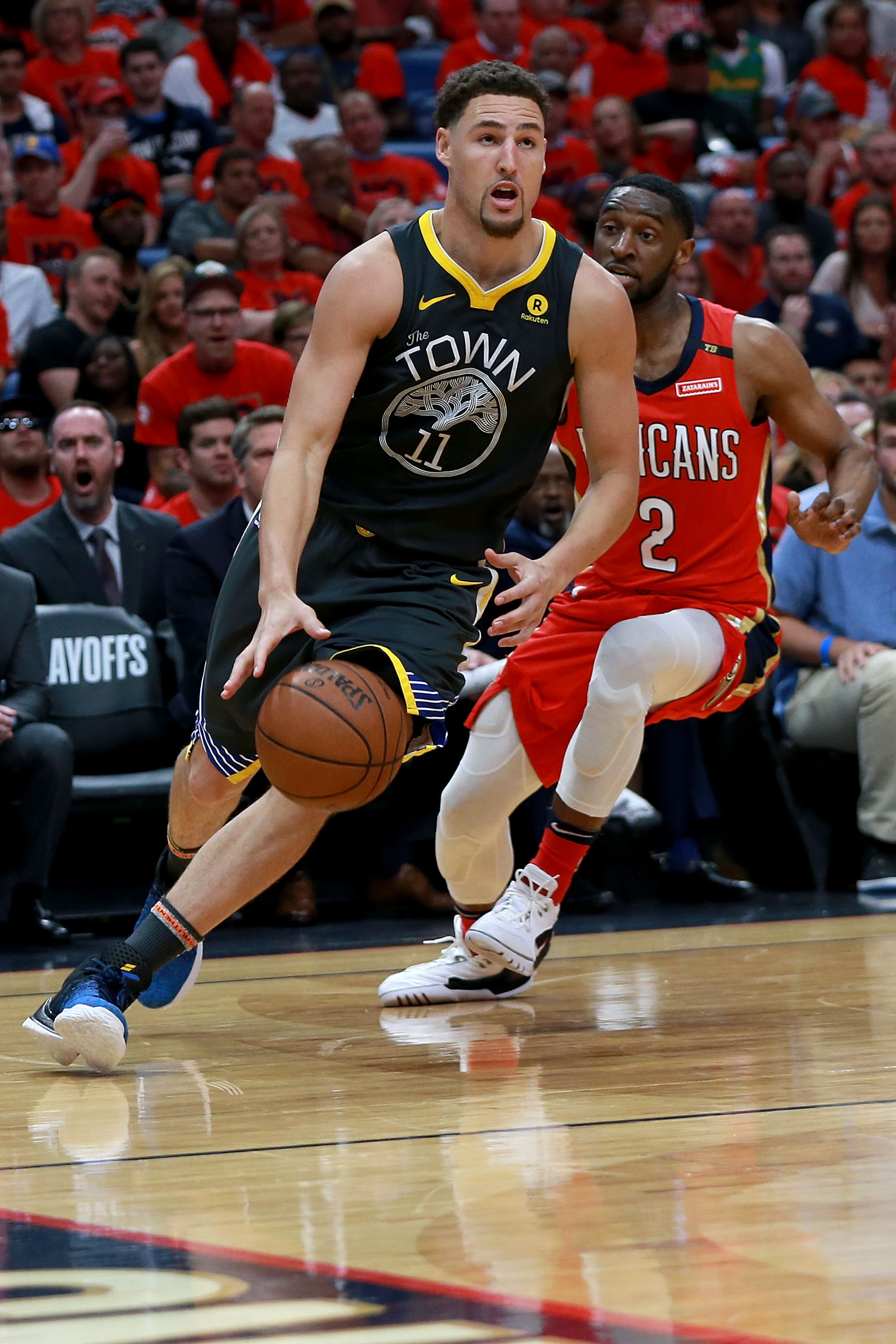
Once it gains possession of the ball, the offensive team advances the ball into the front court. The team can dribble the ball or pass it. If the offensive team scores, the opposing team immediately takes the ball out-of-bounds from behind the base line and tries to move the ball to the basket at the other end of the court. It becomes the offensive team and the team that just scored becomes the defensive team. Action continues in this manner until the clock is stopped.
If a player misses a shot, both teams try to gain possession of the ball by catching the rebound. All missed field goal attempts and most missed free throw attempts result in rebounds. Rebounding is a vital part of the game. Most teams miss at least half their shots. Therefore, a strong rebounding team can control the ball more and has more scoring opportunities.
Offensive strategies
try to free a player for a good scoring opportunity. The offense may run plays that require a number of passes and constant movement by the five players. A successful play will produce a good shot or cause a defender to commit a foul. Players may set a screen or pick to free a teammate for a shot. In a screen or pick, an offensive player legally blocks a defensive player with his or her body so the defensive player cannot guard the player with the ball. That player can then take an open shot.
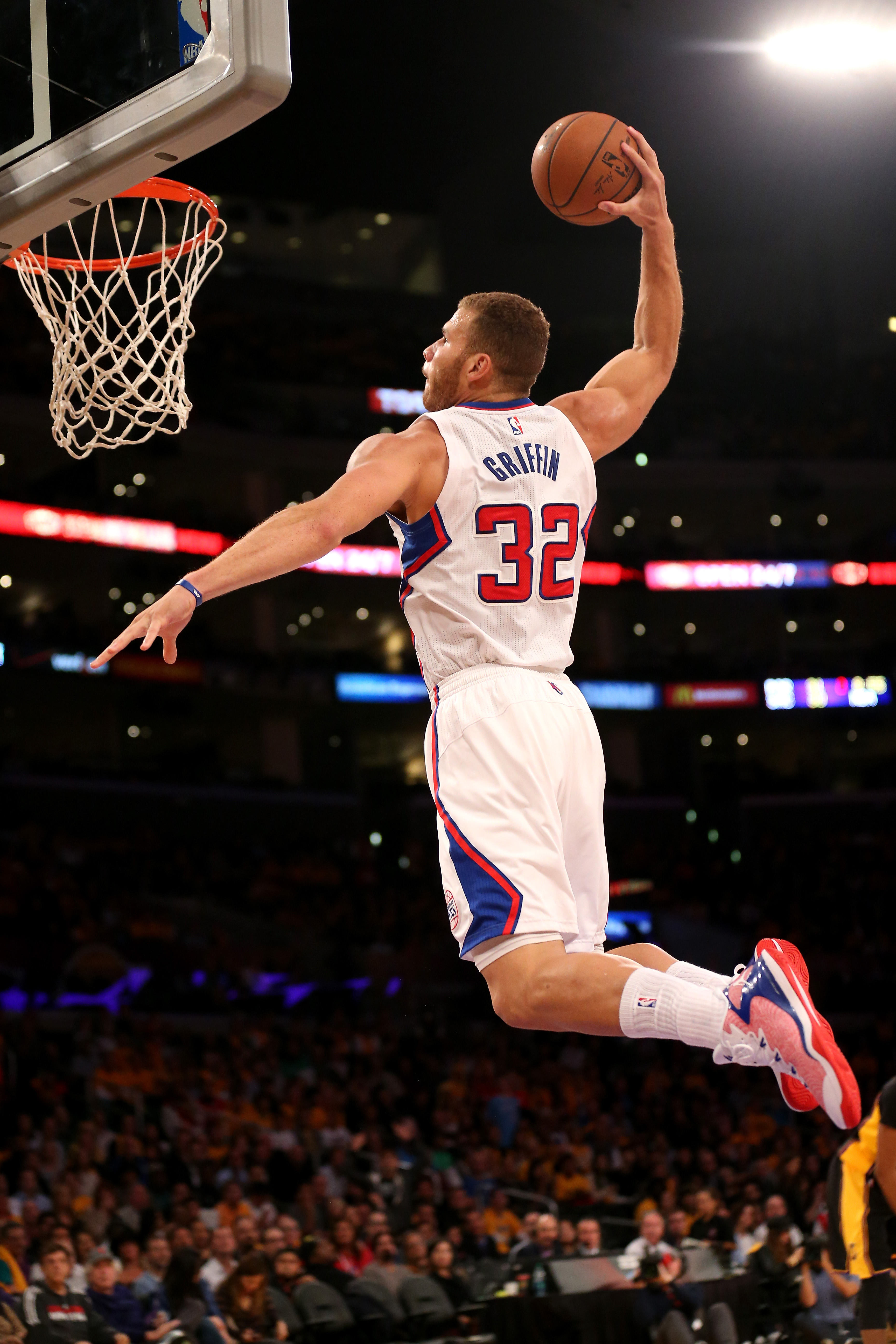
The fast break is designed to score quickly after the offensive team gains possession of the ball. The offense tries to get at least one of its players ahead of the defense for an easy shot before the defenders can move into proper position.
Defensive strategies.
There are two types of team defense, zone and man-to-man. In a zone defense, each player is assigned a particular area of the front court to defend. In man-to-man defense, each player guards a particular offensive player on all parts of the court.
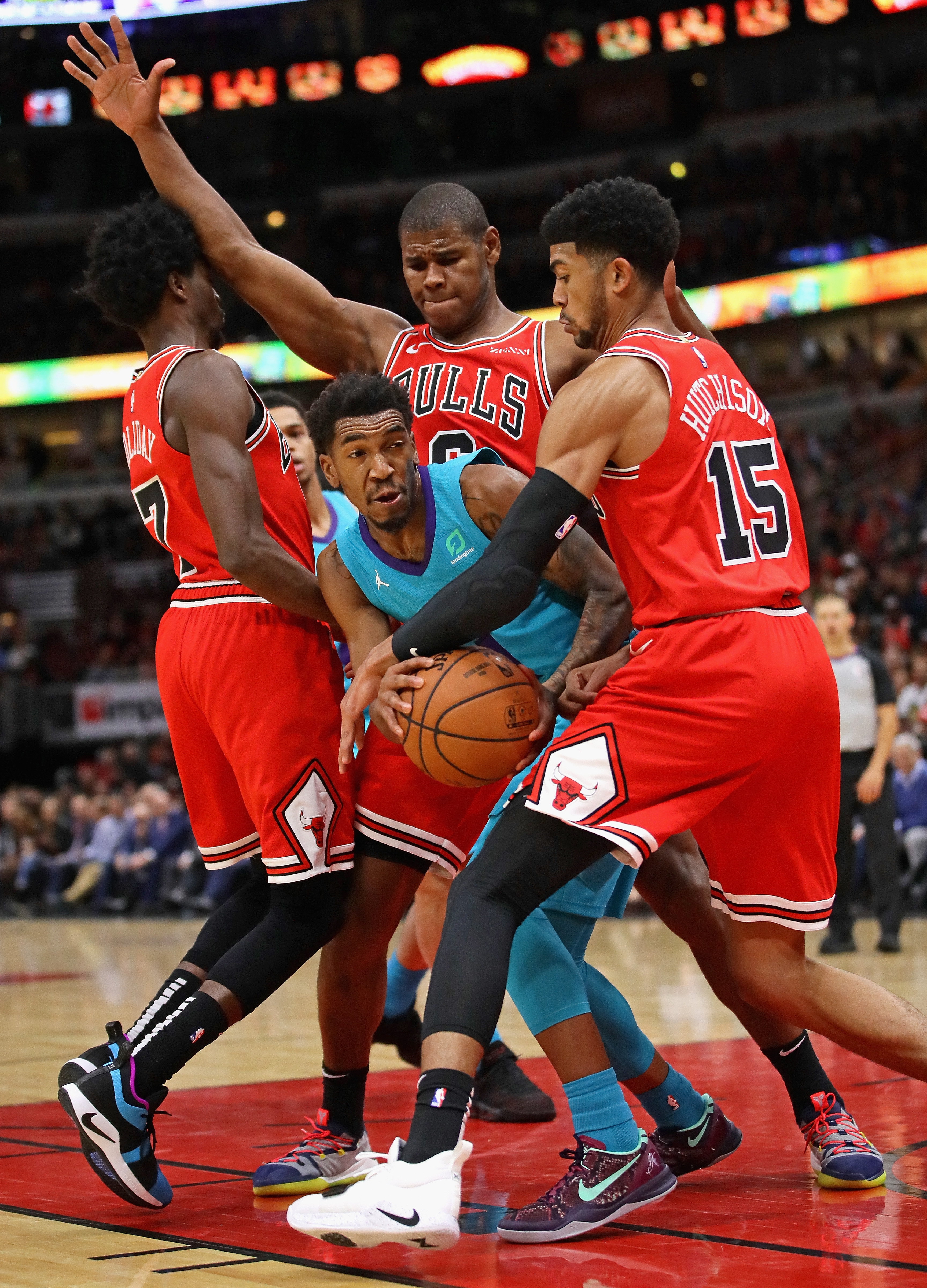
One variation of the two defenses is the press. The press is designed to put defensive pressure on the offensive team all over the court. The press tries to force the offensive team into a turnover (losing possession of the ball). Pressing defenses often use a tactic called the trap or double-team. In a trap, two defensive players suddenly converge on the player with the ball, trying to force that player into making a turnover.
Fouls
are called by officials. Players may commit either a personal foul, a flagrant foul, or a technical foul.
The more common type of foul is the personal foul. Most personal fouls occur when a player holds, pushes, or charges into an opponent, or hits the arm or body of an opponent who is in the act of shooting. A player fouled in the act of shooting gets two free throws if the shot was missed and one if it was made. A player receives three free throws if fouled while attempting and missing a three-point shot and one if the shot is good. If the fouled player is on the offensive team but not shooting, his or her team retains possession of the ball.
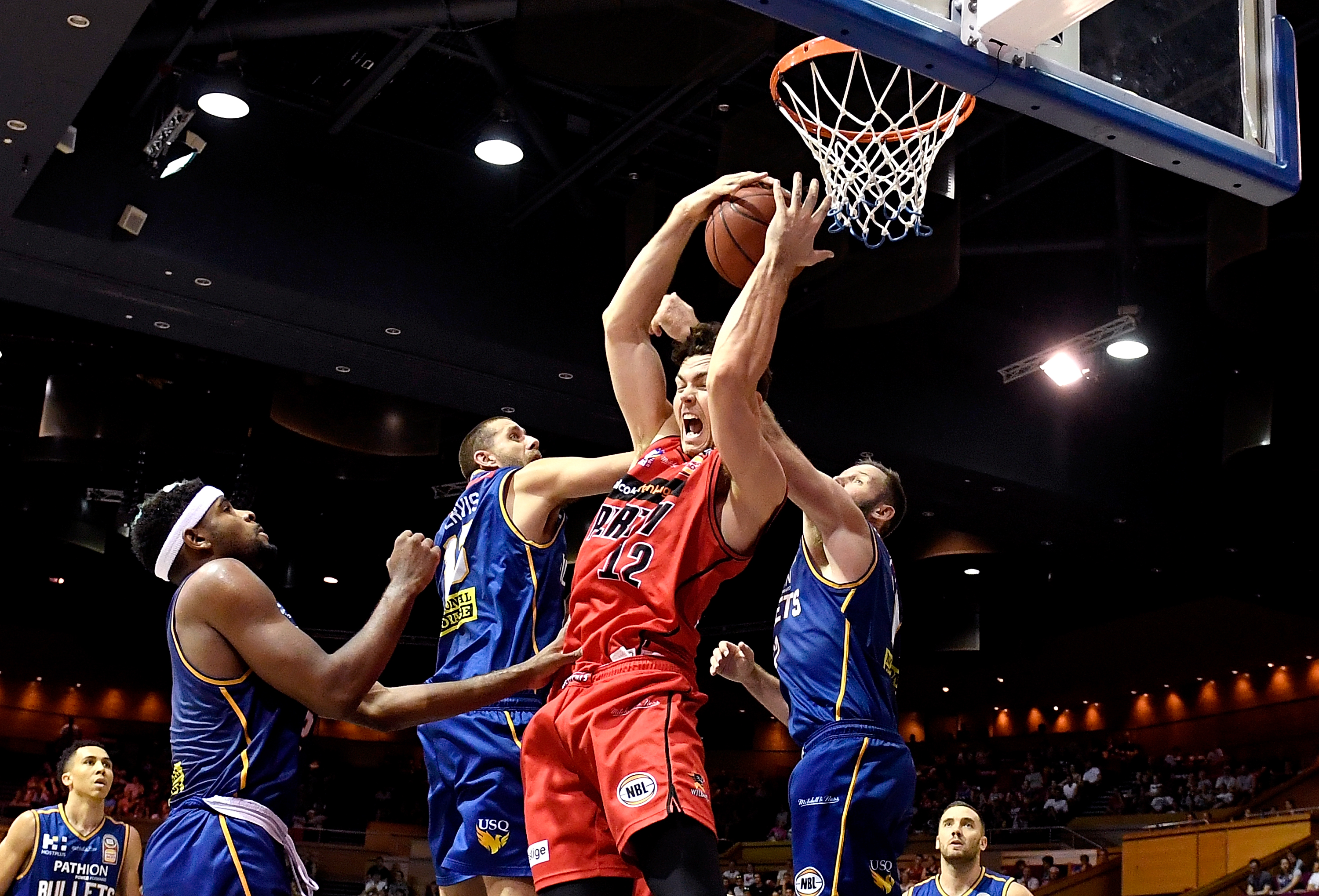
A team goes into the penalty situation after committing a certain number of personal fouls in a quarter or half. The fouled team then shoots one or two free throws after every foul for the rest of that quarter or half. In high school games, the fouled player is awarded a free throw beginning with the fifth foul committed by the opposing team each half. If the player makes the free throw, a second shot is awarded. This situation is called the one-and-one. In college games, the one-and-one begins with the seventh foul on the opposing team. Two free throws are awarded after the 10th foul in each half. If a player commits a foul while in possession of the ball, no free throws are awarded. Instead, the other team gets possession of the ball. This type of foul is called an offensive or player controlled foul and does not count toward the penalty situation. All other fouls count toward the penalty situation and are called team fouls.
In the NBA, the fouled player shoots two free throws beginning with the opposing team’s fifth team foul in each quarter. In addition, a fouled player gets two free throws if the offending team has committed more than one team foul in the last two minutes of a quarter.
In any competition, if an official decides that a player has committed a flagrant foul, also called an intentional foul, the fouled player gets two free throws. In the NBA, the fouled team also retains possession of the ball. The NBA has flagrant 1 and flagrant 2 fouls. A flagrant 1 foul is unnecessary contact. The opposing team is awarded two free throws and possession of the ball. A flagrant 2 foul is unnecessary and excessive contact. The opposing team is awarded two free throws and possession of the ball, and the player who committed the foul is ejected from the game. A second flagrant 1 foul also results in ejection.
A high school or college player is disqualified from a game after committing five personal fouls. In college games, certain technical fouls count toward player disqualification and the penalty situation. In the NBA, disqualification comes after six personal fouls.
A technical foul may be called on any player or coach. Most technical fouls are called for unsportsmanlike conduct toward the officials. In high school and college games, if a player or someone on the bench is charged with a technical foul, the opponent gets two free throws. In high school games, the opponent also gets possession of the ball. A player or coach called for two technical fouls is disqualified from the game. The coach is also disqualified if three technicals are assessed against the bench. In the NBA, one free throw is awarded for a technical foul. The team with the ball at the time of the foul keeps the ball. Two technicals against a coach or player result in disqualification.
Violations
are usually committed by the offensive team. The penalty for most violations is loss of possession of the ball. Offensive violations that result in loss of the ball are commonly called turnovers. The most common violations result from ball-handling errors. For example, an official calls a violation for an illegal dribble when the player bounces the ball with both hands at the same time, or stops dribbling and then starts again. A player with the ball may also commit a violation by taking more than two steps without dribbling. A violation is also called when a player sets an improper screen by moving instead of being stationary.
A number of violations result from time restrictions. For example, a team must get the ball in play from out-of-bounds within 5 seconds. Officials call a violation if any offensive player stands in the front court free-throw lane for over 3 seconds. In high school and men’s college games, the team must move the ball across the division line (also known as the midcourt line) within 10 seconds or a violation is called. In the NBA, teams have 8 seconds. The offensive team also commits a violation if it takes the ball into the back court after crossing the division line. In high school and college games, the offensive team commits a violation if a closely guarded player holds or dribbles the ball in the front court for more than 5 seconds. In women’s college games, a closely guarded player commits a violation by holding the ball more than 5 seconds anywhere on the court.
In college and NBA competition, a team commits a violation if it fails to shoot within a certain time. A special shot clock at each end of the court keeps track of the time. College teams must shoot within 30 seconds. NBA teams must shoot within 24 seconds.
Basketball competition
High school competition.
More high schools in the United States participate in basketball than in any other sport. Some states divide their high schools into classes based on school enrollment. In a few states, private schools and public schools conduct separate championship tournaments. Some large cities, such as Philadelphia and Chicago, hold their own championship tournaments.
College competition.
Most U.S. colleges and universities belong to the National Collegiate Athletic Association (NCAA). The schools with the largest athletic programs compete in Division I. Schools with smaller programs compete in Division II or Division III. Many other schools with small programs belong to the National Association of Intercollegiate Athletics (NAIA).
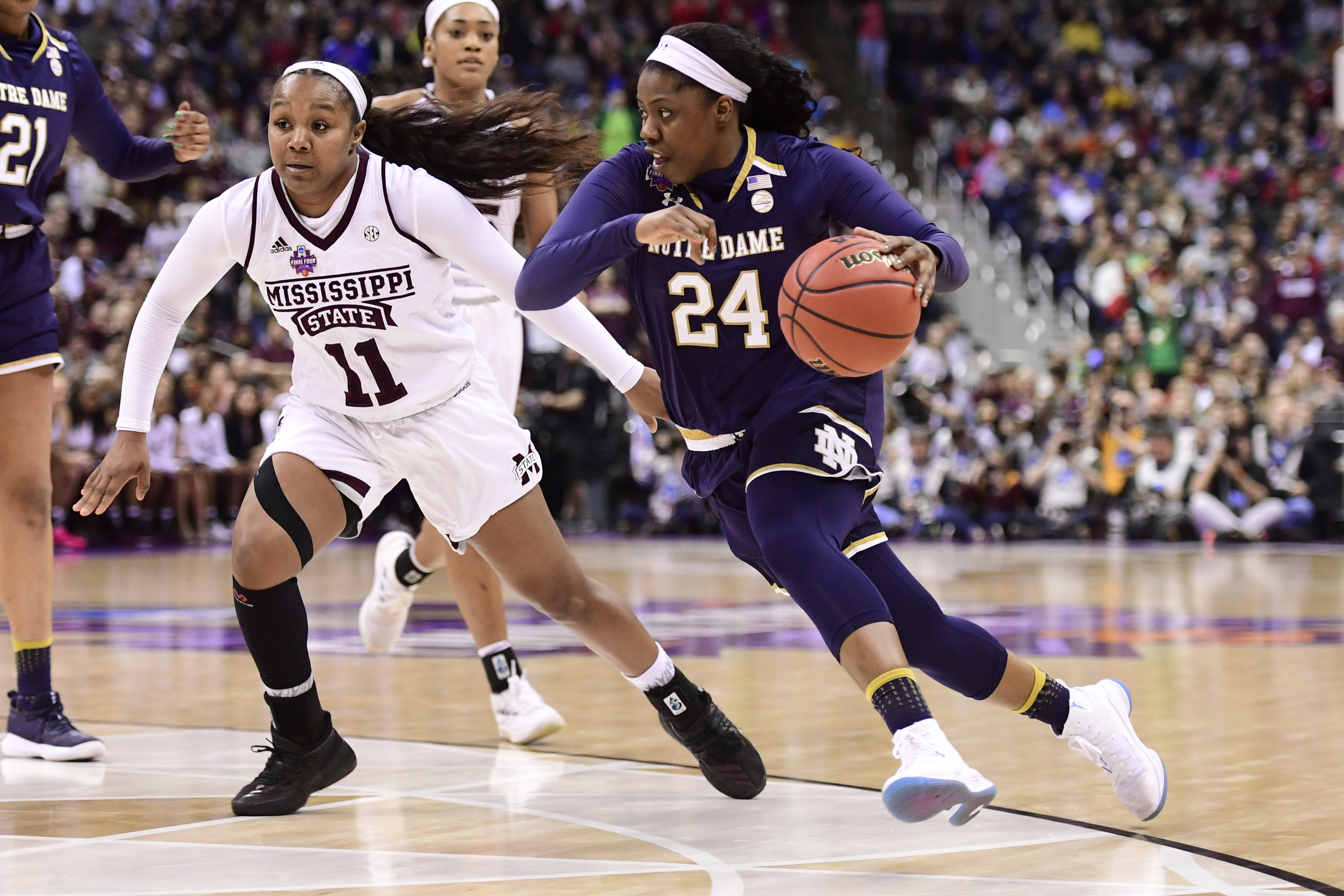
Most schools in the NCAA and NAIA belong to a college conference. Most conferences consist of schools in the same geographical area. A number of them are also major football conferences.
The NCAA championships are determined by a round of playoffs that begin after the end of the regular season. Sixty-eight teams are selected to compete in the men’s Division I tournament. The men’s Division II tournament begins with 64 teams and Division III, with 62 teams. The NCAA women’s tournament starts with 64 teams in all three divisions. The NAIA also holds postseason national tournaments for 32 selected men’s and women’s teams.
Selected Division I men’s teams compete in the National Invitation Tournament (NIT). Separate NIT tournaments are held before and after the regular season. Women’s teams also compete in their own WNIT tournaments before and after the regular season. In addition, men’s teams play in the College Basketball Invitational (CBI) after the regular season.
Almost 500 junior colleges sponsor men’s teams, and about 400 sponsor women’s teams. The National Junior College Athletic Association holds an annual championship tournament.
Professional competition.
The National Basketball Association is the world’s leading professional basketball league. The NBA consists of 30 teams divided into two conferences and six divisions. Each team plays an 82-game schedule. Eight teams in each conference qualify for the championship playoffs. After the regular season ends, and before the first playoff round begins, the league holds 3-game play-in tournaments featuring teams ranked 7 through 10 in each conference. Teams advancing from the tournaments gain the 7th and 8th playoff seeds.
NBA teams obtain new players through an annual draft of former amateur players who are at least 19 years old and one year removed from high school. Players with experience in professional leagues outside the United States are also drafted. The league holds a lottery drawing for the order of selection that is weighted to give teams with the poorest records the best chance to select the highest picks.
There is one women’s professional league in the United States, called the Women’s NBA (WNBA). It began competition in 1997. The WNBA plays from May through September. Women began competing internationally in the 1920’s. Women’s basketball expanded in the United States with the passage of Title IX legislation in 1972. The legislation requires that women’s sports be funded equally to men’s at all educational institutions that receive federal funding. Women’s basketball became a sport in the Summer Olympic Games in 1976. Several unsuccessful attempts were made to create professional leagues for women in the United States, starting with the Women’s Basketball League (WBL) in 1976.
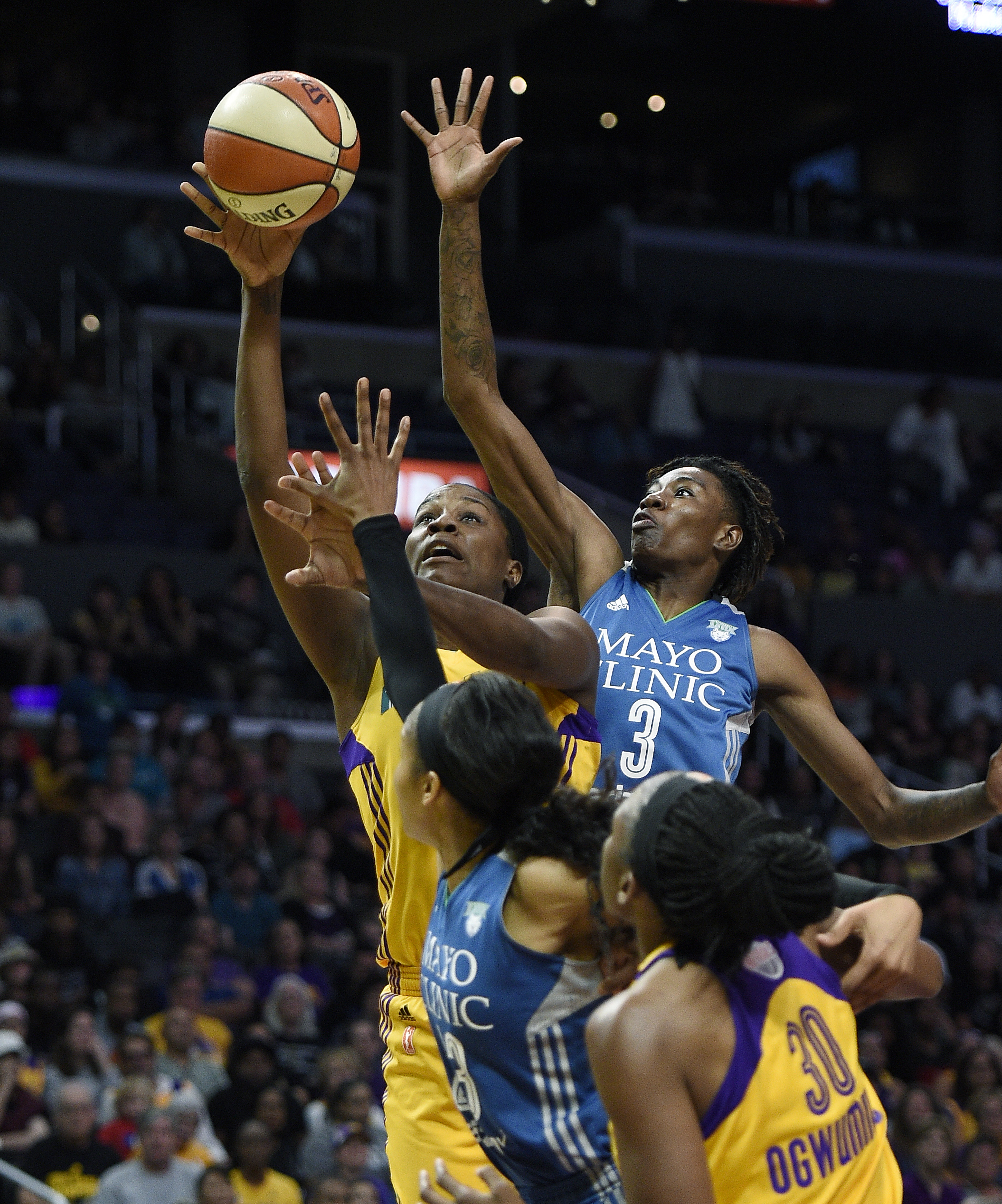
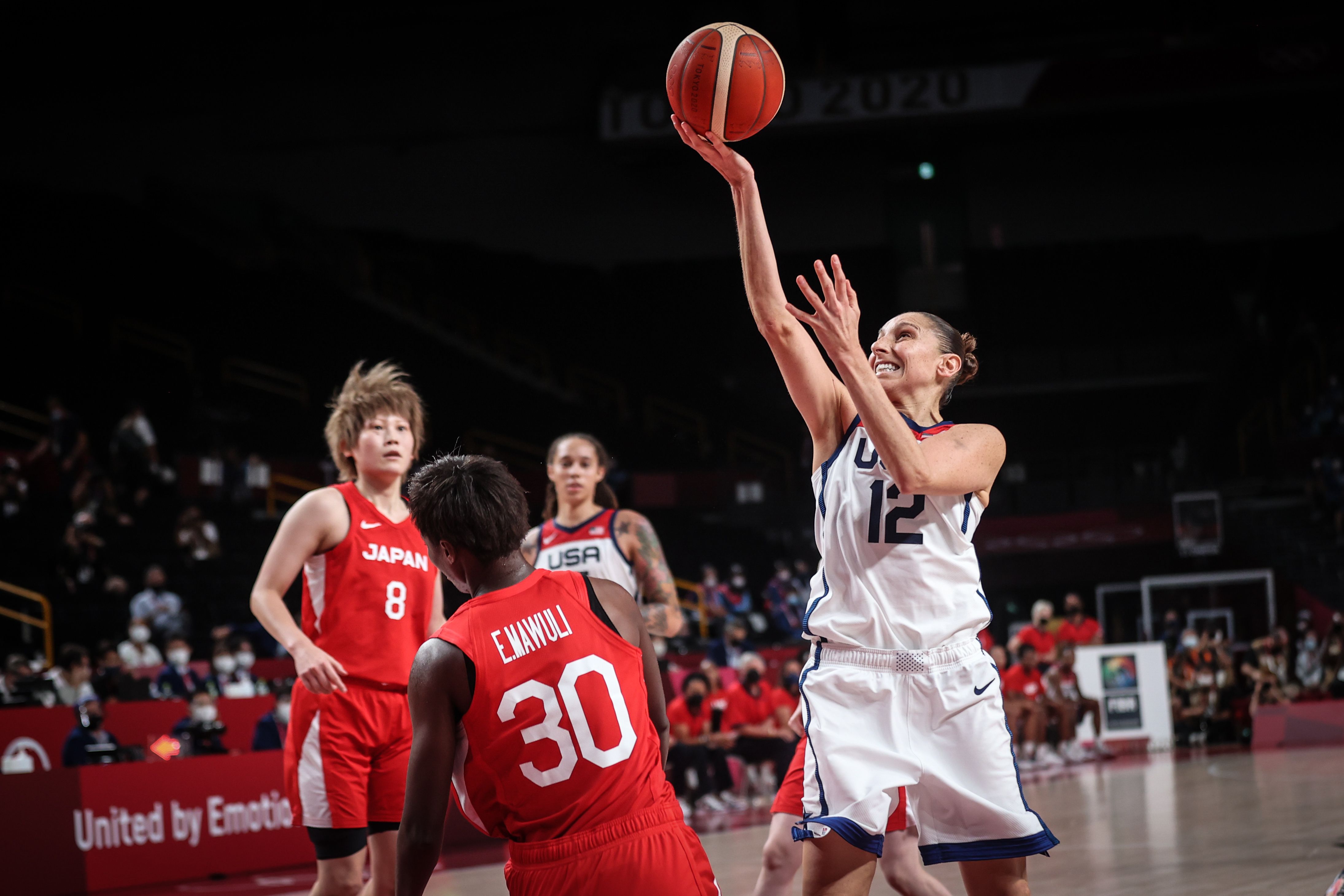
International competition.
Basketball has become a popular amateur and professional sport in countries throughout the world. Both men’s and women’s basketball are sports in the Summer Olympic Games.
International competition is governed by rules systematized by the International Basketball Federation, known as FIBA for the French acronym for Fédération Internationale de Basketball. FIBA was founded in Geneva, Switzerland, in 1932. Many differences between international and American rules have been eliminated since the early 2000’s. But some important differences remain. For example, in international competition, once a shot hits the rim, both offensive and defensive players may touch the ball no matter what its position. Such an action could result in a goaltending violation in the United States. Markings on the court, and some rules regarding fouls and time outs, are also somewhat different in international competition.
Men’s professional basketball leagues thrive throughout the world, especially in Europe. The league season in most European countries consists of about 40 games, about half the length of the NBA season. Many European-born players compete in the NBA. Popular leagues also operate in Asia, Australia, and South America. The Basketball Africa League (BAL), created as a partnership with the NBA and FIBA, began play in 2021. The BAL features competition from the champions of national leagues across Africa. There are several professional women’s leagues throughout the world as well. They typically attract players from the United States who play in the North American winter months.
Thousands of Americans play professional basketball outside the United States, including several who once played in the NBA. Most European teams are limited to two Americans on their roster. Americans may receive such extra benefits as rent-free living quarters, the use of an automobile, and paid trips home. Some Americans have used the option of playing in Europe as a salary-bargaining tactic when dealing with NBA teams.
The history of basketball
Beginnings.
James Naismith, a Canadian, invented basketball in 1891. Naismith was a physical education instructor at the International YMCA Training School (now Springfield College) in Springfield, Massachusetts. Luther H. Gulick, head of the school’s physical education department, asked Naismith to create a team sport that could be played indoors during the winter.
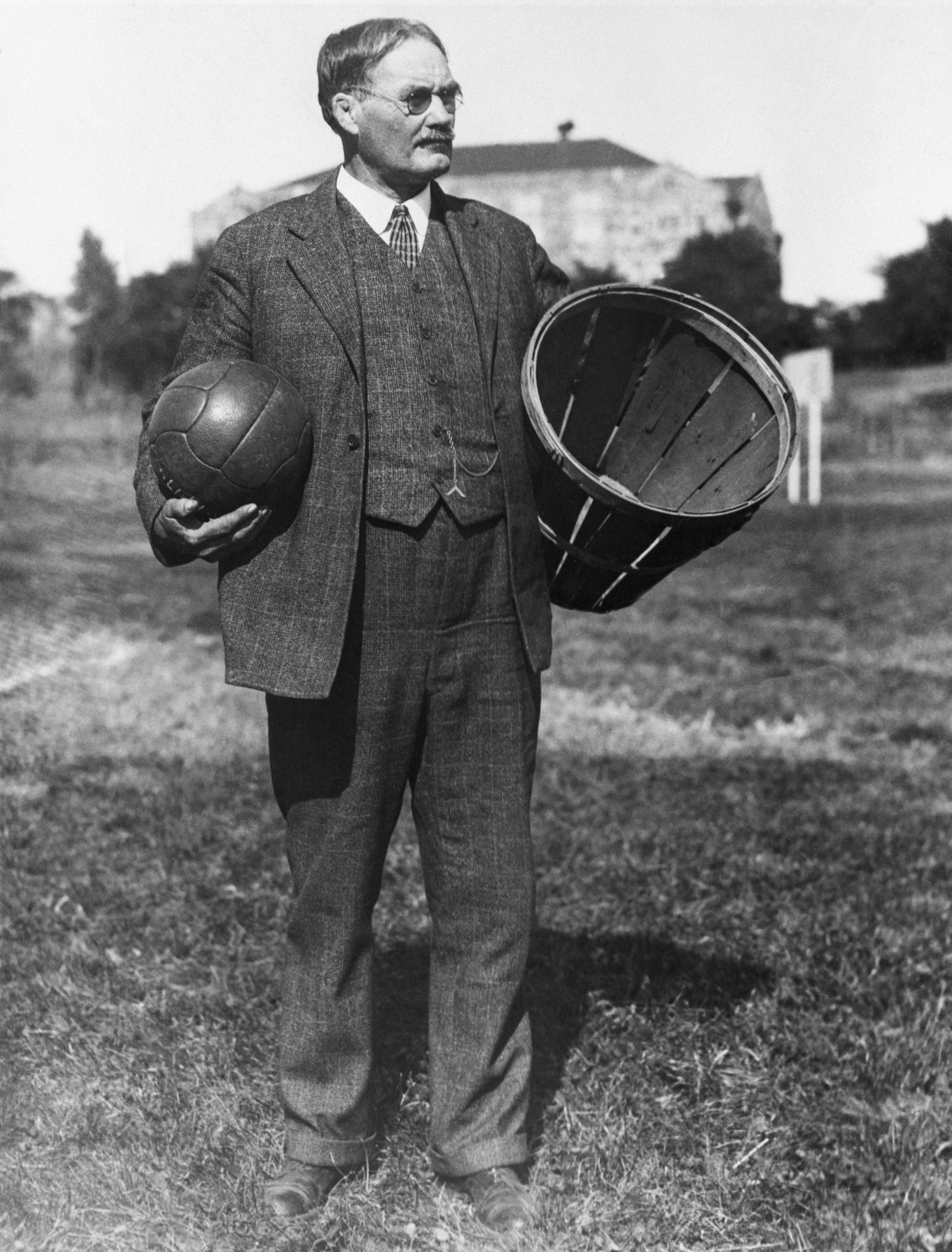
For his new game, Naismith decided to use a soccer ball because it was large enough to catch easily. He then asked the building superintendent for two boxes to use as goals. The superintendent had no boxes but provided two peach baskets. The baskets were attached to a gymnasium balcony railing located 10 feet (3 meters) above the floor. The first game took place between members of Naismith’s physical education class in December 1891. After the first experimental game, Naismith drafted the original 13 rules of the game. They appeared in the school newspaper on Jan. 15, 1892. Soon basketball was being played by YMCA, high school, college, and professional teams in the United States and Canada.
Changes in the game.
In 1893, metal hoops with net bags attached replaced the wooden baskets. Officials pulled a cord attached to the net to let the ball drop out. Baskets with bottomless nets came into general use about 1913. The backboard was introduced in 1894. That year, larger balls replaced soccer balls.
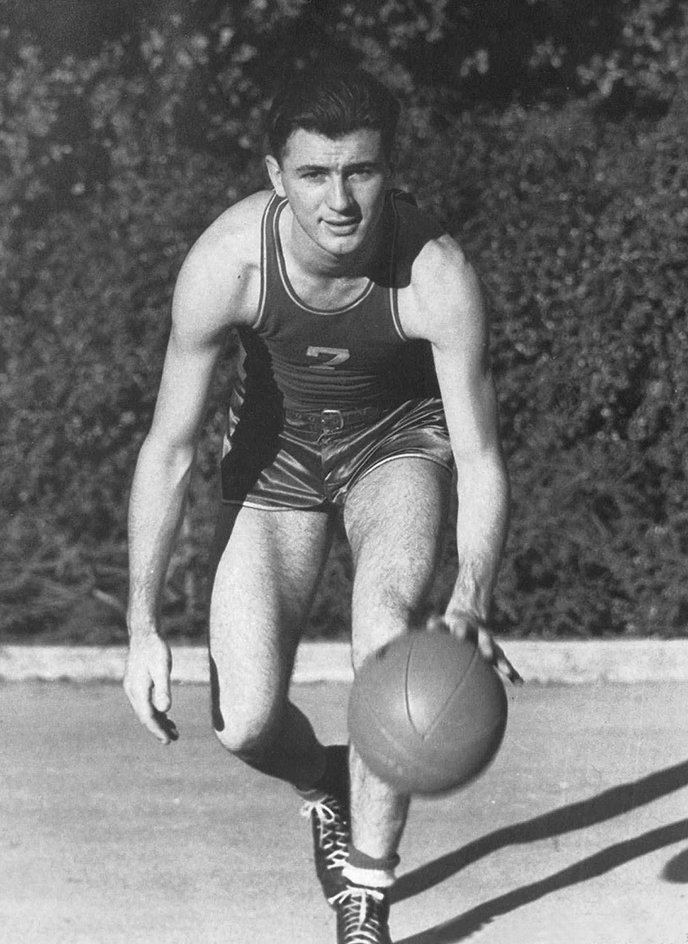
In 1932, the 10-second rule was adopted. This rule stated that the offensive team must advance the ball across the division line within 10 seconds or lose possession. Once the ball crossed the line, the offensive team lost possession if a player took the ball back over the line. Until 1937, a center jump was held after every field goal. Beginning in 1937, the defensive team received the ball out-of-bounds after a field goal.
In 1935, a rule was adopted that prohibited any offensive player from standing in the free throw lane for more than three seconds. In 1955, the foul lane was widened to 12 feet (3.7 meters) from the previous 6 feet (1.83 meters). These changes resulted in more offensive movement and less physical contact near the basket.
Early basketball had little scoring. Players basically used two shots, the lay-up and a two-handed set shot. Hank Luisetti revolutionized the game by popularizing a one-handed shot. Luisetti was a star for Stanford University from 1935 to 1938. His one-handed shot could be released quicker than the two-handed shot and was more difficult to defend.
The one-handed shot was the most popular shot in basketball until Joe Fulks popularized the jump shot. Fulks played for the Philadelphia Warriors of the NBA from 1946 to 1954. To shoot, he jumped up and released the ball at the peak of his jump. Some historians also credit Kenny Sailors with making the jump shot popular. Sailors led the University of Wyoming to the NCAA men’s basketball championship in 1943. He later played professional basketball from 1946 to 1951. The jump shot was even more accurate and difficult to defend against than the one-handed shot. The jump shot became the most popular shot in basketball and greatly increased scoring. 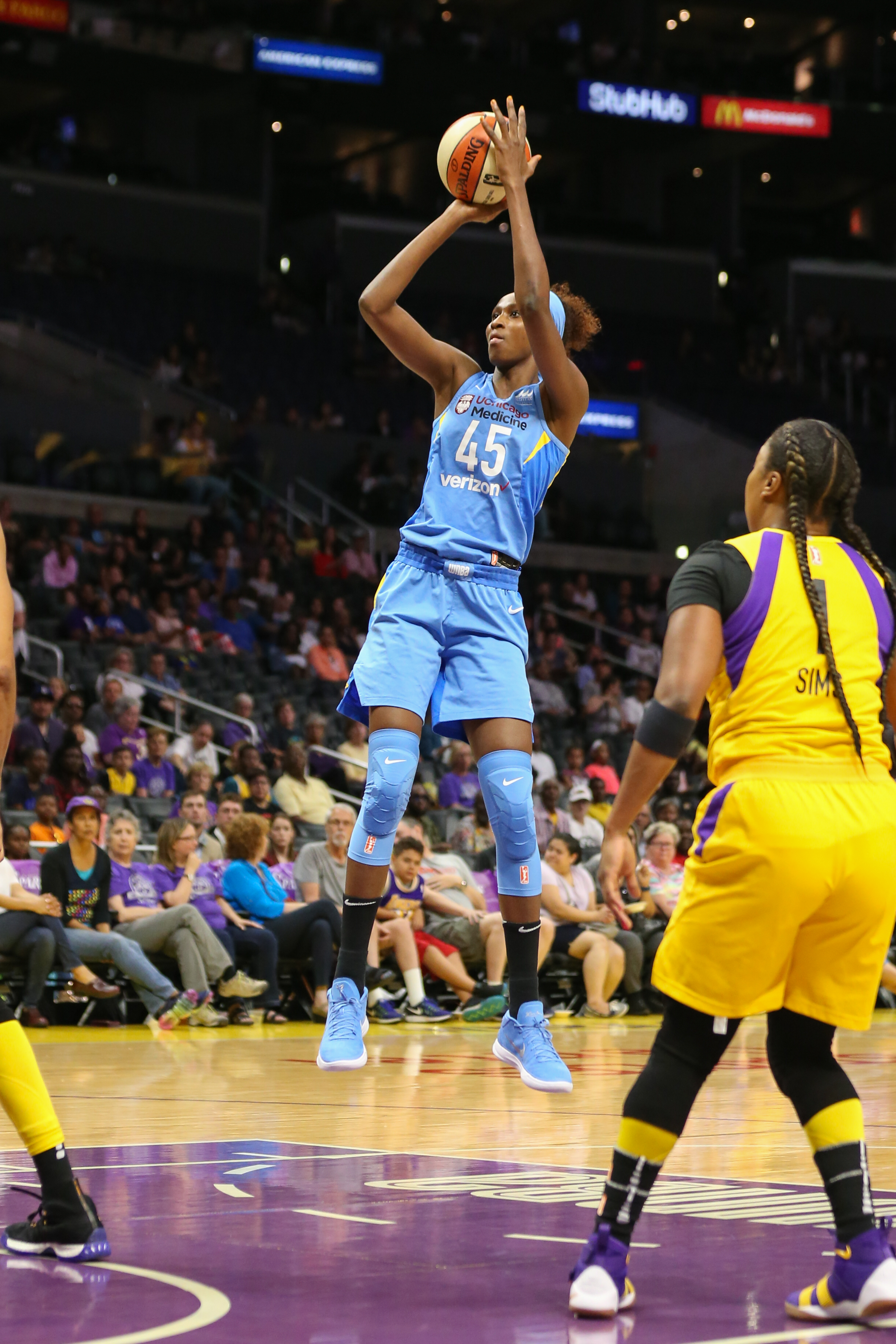
The history of college basketball.
The first college game using five-player teams took place in Iowa City, Iowa, on Jan. 16, 1896. The University of Chicago defeated the University of Iowa, 15-12.
During the game’s early days, colleges played teams in their own area. Travel was too difficult and too expensive to allow frequent games between schools from different sections of the country. Instead, teams in a region formed conferences. The Ivy League, the oldest conference still in existence, was established for the 1901-1902 season.
The first important intersectional game took place in 1934. The University of Notre Dame played New York University in Madison Square Garden in New York City as part of a double-header that attracted more than 16,000 fans. The game marked the beginning of intersectional basketball on a regular basis. The first national tournament, the NIT, was held at the end of the 1937-1938 season. Temple University won the first title. The University of Oregon won the first NCAA tournament, held after the 1938-1939 season.
After the end of World War II in 1945, a number of developments helped spread the popularity of college basketball. Schools built large arenas for games, increasing attendance. Many games were televised. The revenue from greater attendance and from television enabled schools to offer athletic scholarships to players. Many young athletes turned to basketball in the hope of winning a scholarship. 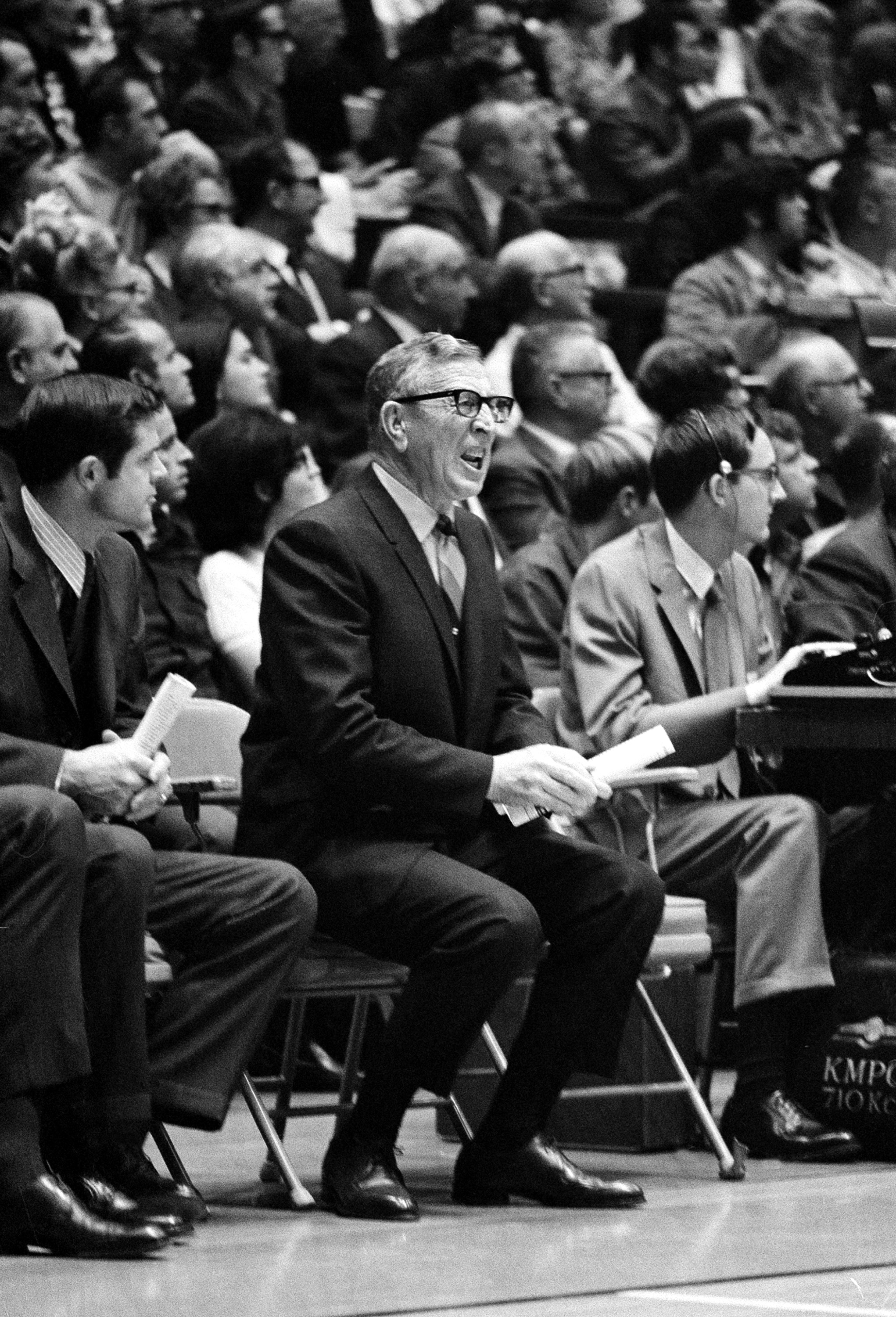
Until about 1950, college basketball was a largely segregated sport. Gradually, Black players were allowed to play on teams that previously had only white players. By the mid-1960’s, many players on major college teams were Black.
The University of California at Los Angeles (UCLA) dominated college basketball in the 1960’s and 1970’s. The UCLA teams, coached by John Wooden, won 10 NCAA basketball titles between 1964 and 1975. UCLA won 88 consecutive games from 1971 to 1974.
In 1968, the Naismith Memorial Basketball Hall of Fame opened on the campus of Springfield College. During the 1970’s and 1980’s, college basketball greatly increased in popularity. Much of this popularity came from the frequent regional and national televising of games. The NCAA Division I men’s championship tournament now ranks among the major sports events of the year.
The popularity of women’s basketball increased enormously at both the high school level and the college level. Women’s basketball became an Olympic sport in 1976. The NCAA held its first national tournament for women’s teams in 1982. The University of Connecticut women’s team, under coach Geno Auriemma, dominated the women’s game from the mid-1990’s into the 2010’s. Connecticut won a record 11 NCAA championships beginning in 1995. In 2017, the team won its 100th consecutive game, the longest winning streak in NCAA basketball history. The streak ended at 111 straight games on March 31, 2017. 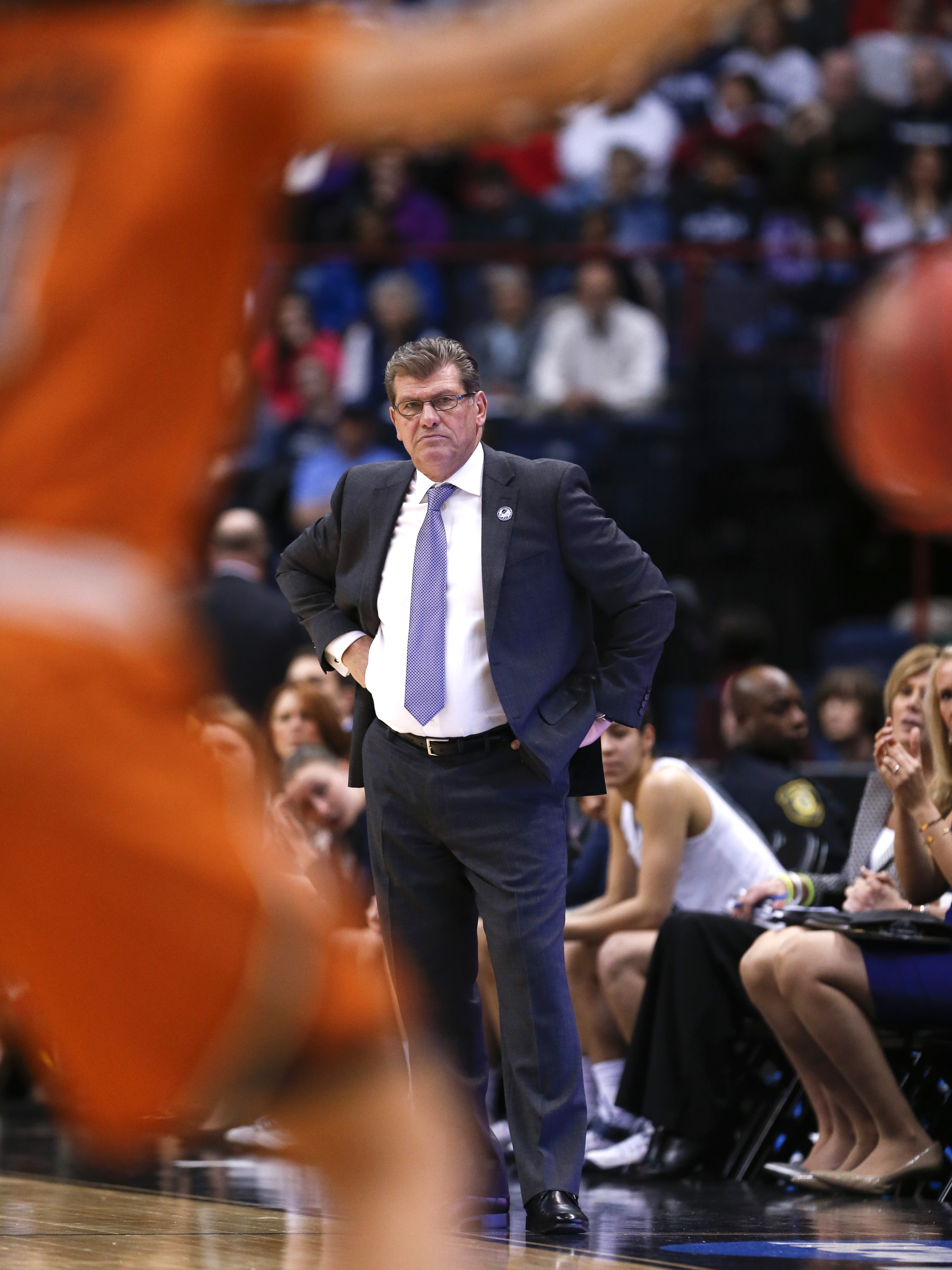
A number of other women’s teams also have won multiple championships. These include teams from Baylor University, Louisiana Tech University, Stanford University, the University of Notre Dame, the University of South Carolina, the University of Southern California, and the University of Tennessee.
A number of men’s teams competed for NCAA supremacy in the early 2000’s. Teams from the University of Connecticut, Duke University, the University of Florida, the University of Kansas, the University of North Carolina, and Villanova University all won multiple championships.
The history of professional basketball.
The first professional basketball league was the six-team National League, formed in 1898. It lasted for five seasons. The Buffalo Germans, founded in 1895, dominated early professional basketball. The team won 111 straight games from 1908 to 1910. The most famous professional team of the early 1900’s was the Original Celtics of New York City, founded in 1918. The team won 720 of 795 games from 1921 to 1928.
The American Basketball League was formed in 1925 with teams from the East and Midwest. The league disbanded in 1931 and re-formed in 1933 with teams concentrated in the East. A primarily Midwestern league called the National Basketball League (NBL) was organized in 1937. The Basketball Association of America (BAA) was formed in 1946. The NBL and BAA merged in 1949 to form the National Basketball Association.
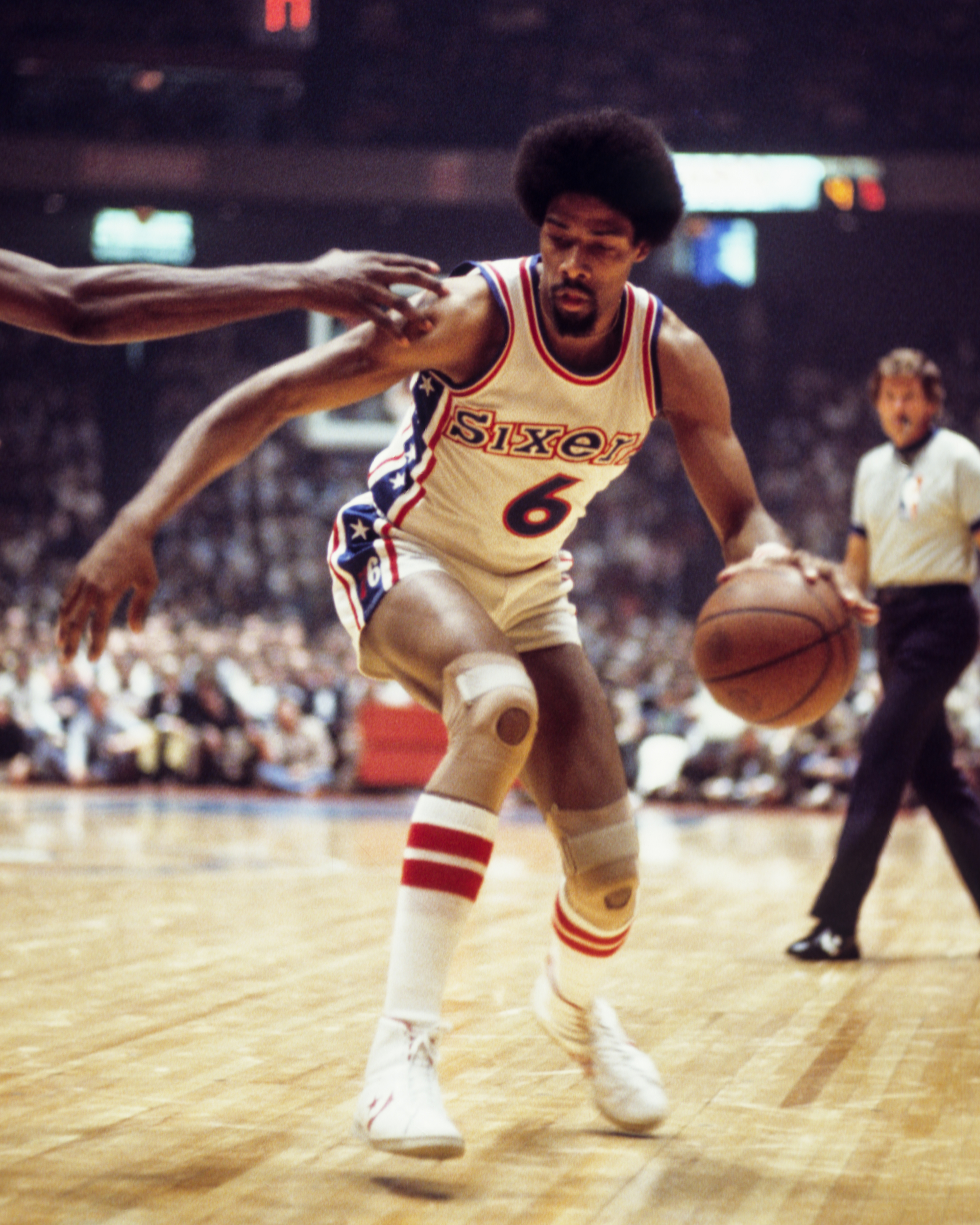
During the 1920’s and 1930’s, two all-Black professional teams dominated their competition. The teams were the New York Renaissance Big Five, called the Rens, and the Harlem Globetrotters. Many professional leagues were segregated, often forcing the Rens and Globetrotters to play exhibition games. However, a number of teams that traveled through the United States were integrated. The Rens won the first World Professional Basketball Tournament in 1939. The Globetrotters won the second in 1940, defeating professional teams that eventually formed the NBA. The Globetrotters still play today, though only as an entertainment act. 
In April 1950, Chuck Cooper, Earl Lloyd, and Harold Hunter became the first Black players to be drafted by NBA teams. On Oct. 31, 1950, Lloyd, playing for the Detroit Pistons, became the first African American man to play in an NBA game. In a short time, Black players were on teams throughout the NBA. Some of the outstanding players of the 1950’s and 1960’s were such Black former college stars as Bill Russell, Wilt Chamberlain, Oscar Robertson, and Elgin Baylor.
In 1967, a professional league called the American Basketball Association (ABA) was formed. It merged with the NBA in 1976, forming a 22-team league.
Professional basketball greatly increased its popularity starting in the 1980’s. By the 2004-2005 season, the NBA had expanded to 30 teams. They played exhibition and regular season games throughout the world to incease the league’s exposure. In 2001, the NBA founded a development league, now called the G-league, as an instructional league primarily for young players trying to work their way up to the NBA.
Many historians consider that the modern NBA began in 1954 with the introduction of the 24-second shot clock. During the 1950’s and 1960’s, competition was dominated by two great centers, Wilt Chamberlain and Bill Russell. Chamberlain became the highest scorer in NBA history. He established an all-time NBA record by scoring 100 points in a game in 1962 and averaged 50 points a game for an entire season in 1961-1962. Russell’s Boston Celtics won 8 consecutive titles and 11 overall during Russell’s 13 years as a player and player coach.
During the 1980’s, Earvin “Magic” Johnson of the Los Angeles Lakers and Larry Bird of the Boston Celtics established a rivalry that helped propel the NBA to increased popularity. League popularity rose during the 1990’s, led by the exciting play of Michael Jordan, who helped the Chicago Bulls win six championships.
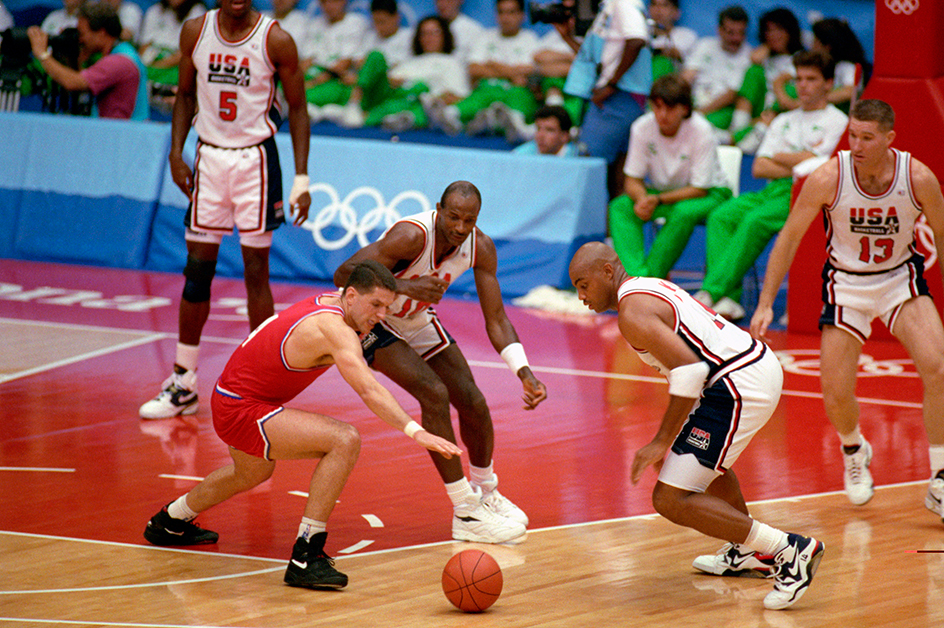
NBA players became eligible to play in the Olympic Games in 1992. A squad dominated by NBA stars won the championship at the 1992 Summer Games. The team, nicknamed the Dream Team, was undefeated and won every game by more than 30 points.
Basketball today.
During the early 2000’s, other countries began to challenge the supremacy of the United States in international basketball. At the 2004 Summer Olympic Games in Athens, Greece, the American men’s team failed to win the gold medal for the first time since NBA players started playing for the national team. The American men finished third, with Argentina winning the gold medal. The American women’s team won the gold medal in Athens for the third consecutive Summer Games.
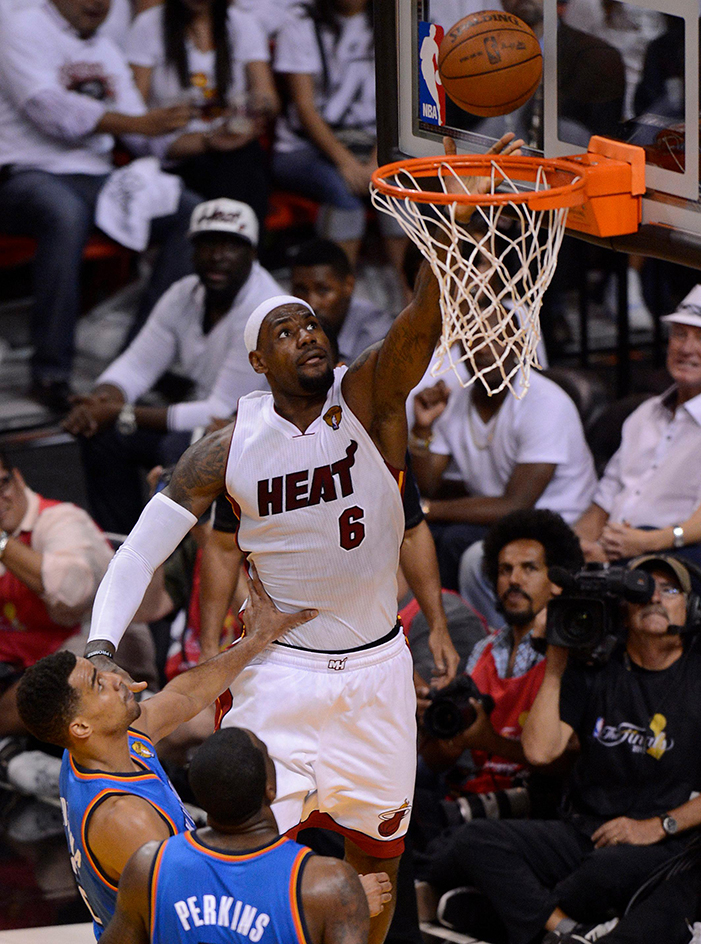
Players from other countries increasingly made an impact on the NBA. A few non-American players succeeded in the NBA during the 1990’s, such as Toni Kukoc of Croatia and Arvydas Sabonis of Lithuania. The number greatly increased during the early 2000’s. In 2002, Chinese center Yao Ming became the first non-American player selected first in an NBA draft. Several other non-American players became NBA stars. They include Steve Nash of Canada, Dirk Nowitzki of Germany, Tony Parker of France, Pau Gasol of Spain, Emanuel (Manu) Ginobili of Argentina, Joel Embiid of Cameroon, Giannis Antetokounmpo of Greece, and Nikola Jokić of Serbia. By the end of the 2010’s, team rosters included more than 100 international players from over 40 countries.
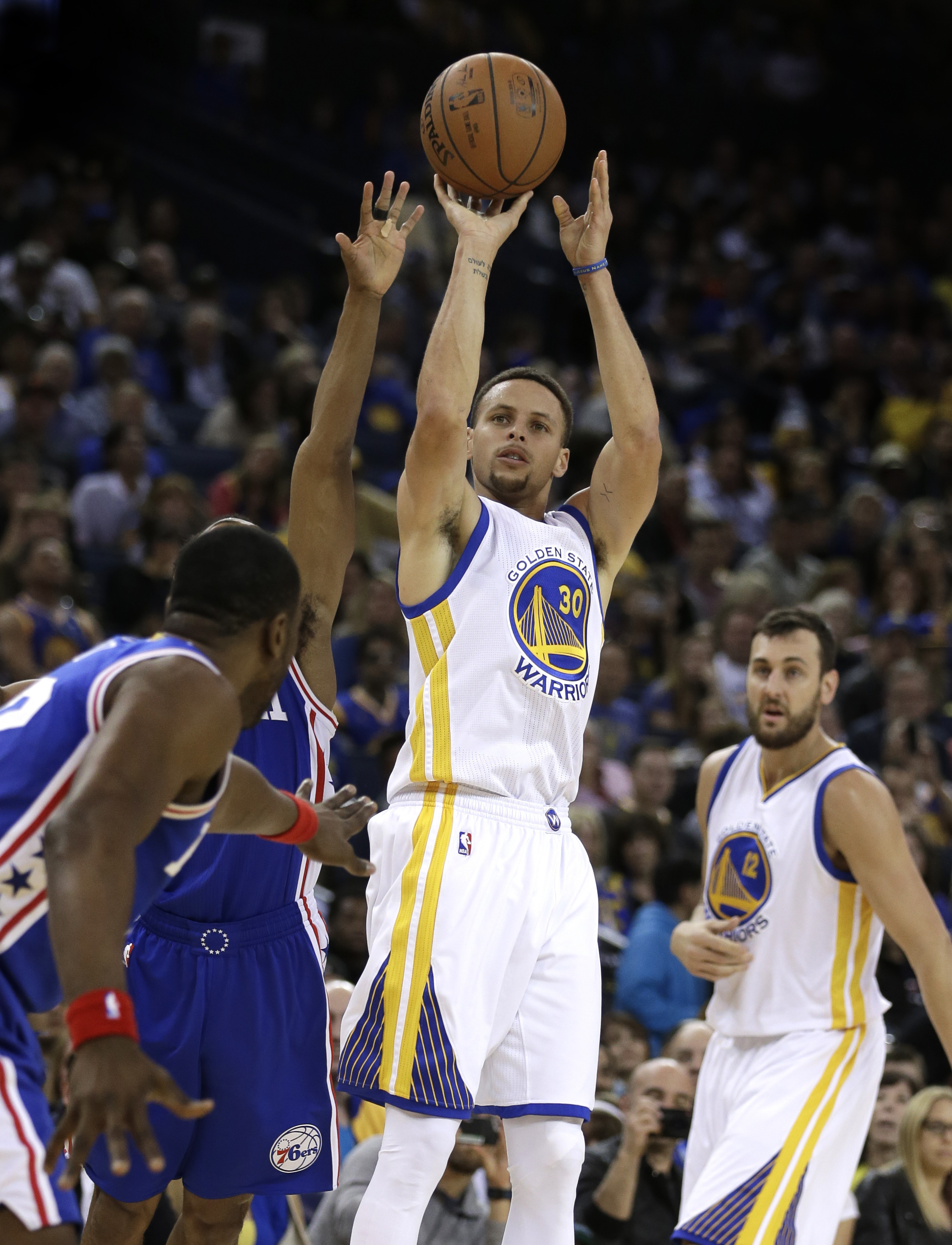
LeBron James became the dominant men’s player in the NBA during the early 2000’s. James was the league’s Most Valuable Player four times from 2008 through 2013. He helped lead the Miami Heat, Cleveland Cavaliers, and Los Angeles Lakers to NBA championships. In the 2010’s, the Golden State Warriors dominated the NBA with their fast-paced style. The team featured two high scorers, guard Stephen Curry and forward Kevin Durant.

